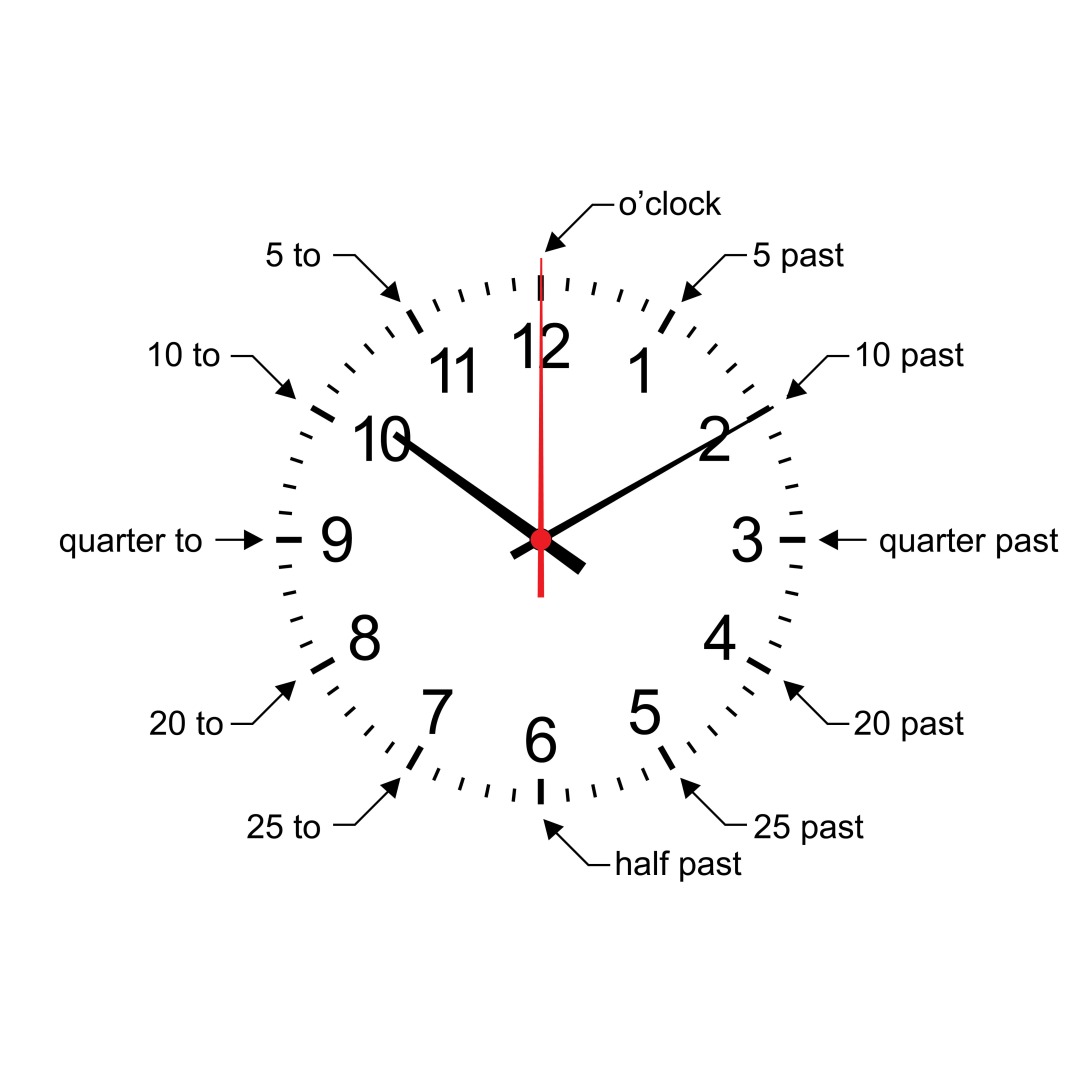Telling time in English is an essential skill for clear communication, whether you’re scheduling a meeting, making plans with friends, or simply answering “What time is it?” From understanding “o’clock” to mastering terms like “quarter past” or “half past,” this guide breaks down the most common expressions and fascinating time-related facts in English.
You’ll also discover the historical origins of terms we use every day, like AM, PM, and “time flies.” Ready to enhance your time-telling skills in English? Dive in and uncover the language’s unique approach to the concept of time!
There are different ways to tell time in English. Here are the most common forms:

The word “o’clock” comes from the old phrase “of the clock.” Hundreds of years ago, people would say “It is three of the clock” to mean that the time is 3:00. Over time, this phrase got shortened to “three o’clock,” which we still use today.
It’s a nice example of how the English language has changed over time, and now most people don’t think about the original meaning of the phrase. But the next time you hear “o’clock,” you can remember that it’s a little piece of history!
Here are some fun and surprising facts about time that you might find interesting. Can you guess if they are true or false?


Here are a few useful expressions in English related to time:
Mastering how to tell time in English is more than just learning numbers and phrases; it’s about understanding the culture and quirks of the language itself. Whether you’re confidently saying “half past two” or explaining why AM and PM have Latin roots, you’re building a bridge to clearer communication.
How would you explain the difference between “quarter to” and “quarter past” to someone learning English for the first time?
Or, better yet, can you think of any unique time expressions in your own language that English speakers might find interesting?
Explore these questions, and who knows – you might find even more surprising connections across languages!
Start your 7-Day Trial now and access lesson 1 of all courses. More than 120 lessons at all levels.
With your Trial account, you can also try our Live Classes , Masterclasses and Conversation Café, so you can see if we are what you’re looking for.